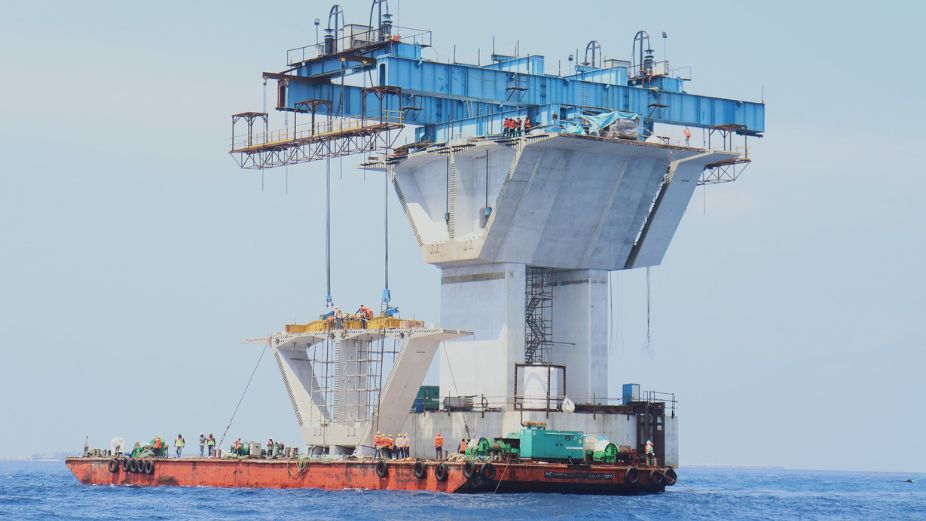
A major engineering milestone was reached on 3 April 2025 with the successful erection of the tallest precast navigation span segment in the world as part of the Greater Malé Connectivity Project (GMCP), the Maldives’ largest infrastructure project to date.
According to the High Commission of India in the Maldives, the segment—measuring 8.23 metres in height and 25.37 metres in width, and weighing over 216 metric tonnes—was installed by Afcons Infrastructure Limited, the company executing the project. The installation marks a significant technical achievement in the ongoing development of the GMCP, which aims to transform travel and logistics across the Greater Malé Region.
The GMCP will link Malé with the islands of Villingili, Gulhifalhu, and Thilafushi through a 6.74-kilometre bridge and causeway network. The project is being financed through a USD 500 million package from the Indian government, comprising a USD 100 million grant and a USD 400 million line of credit.
This week’s installation of the navigation span segment is seen as one of the most technically challenging phases of the project. These spans are crucial to ensuring maritime traffic can pass beneath the bridge once complete, while also supporting the high-traffic vehicular structure above. Minister of Construction, Housing and Infrastructure Abdulla Muththalib commended the progress and reaffirmed the government’s expectations for faster implementation in the coming months.
Once complete, the GMCP is expected to significantly improve everyday connectivity for residents, reduce congestion in Malé, and promote economic decentralisation by improving access to Gulhifalhu and Thilafushi—both earmarked for industrial and housing developments.
With the successful placement of this massive segment, the project moves forward into a critical next phase. Officials hope the achievement signals continued momentum toward the project’s broader goal: physically linking islands, unlocking economic potential, and easing the pressure on the capital’s strained transport infrastructure.













